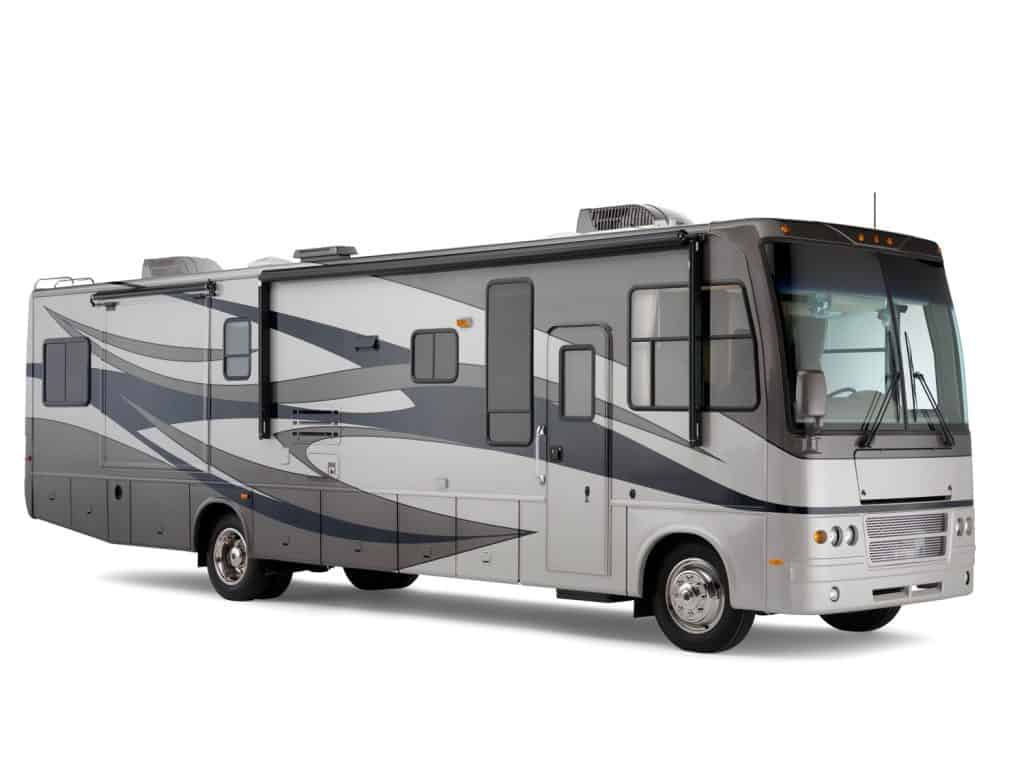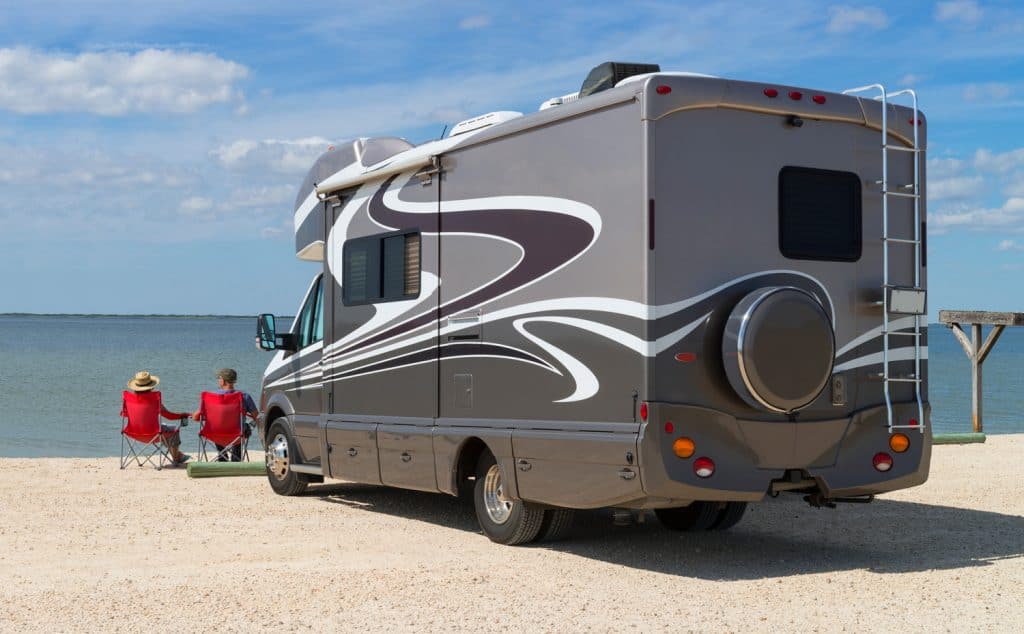Whether you currently own an RV or are in the market to purchase your first one, knowing all of the manufacturer's specs is important for long-distance travel. Regarding the fuel economy, knowledge of fuel tank capacity aids you considerably to plan routes and budget for trips. With that in mind, you might be asking yourself, what is the average size of an RV gas tank? We've done the research to find out!
How many gallons of fuel an RV gas tank holds varies greatly because of the various class sizes and multiple models within those class sizes. Below are the average sizes of RV gas tanks by class:
- Class A - 115 gallons of fuel
- Class B - 25 gallons of fuel
- Cass C - 41 gallons of fuel
The cost of filling your RV's gas tank from empty to full will depend on where you purchase the fuel. As of January 2021, Louisiana has the lowest average fuel cost in the US ($1.96 per gallon). California has the highest average cost ($3.25 per gallon). To fill a Class A RV in Louisiana, you'll likely pay $225.00, whereas filling the same RV in California costs $374.00.
Now that you have a general idea of how large the average RV motorhome gas tank is, we'll break the numbers down even further by class. We've researched RVs extensively and will share all of our findings in this post. By the time you've finished reading, you'll have a better understanding of the RV fuel economies by class, whether or not diesel RV engines are better than gasoline and learn a few tricks to improve your overall fuel economy. Keep reading!

RV gas tank ranges by class
Earlier in this post, we briefly discussed the average fuel tank for all three RV motorhome classes. This section will discuss the fuel economy by class and give you a good idea of the fuel economy you can expect. We'll also share with you some examples of each class that are available to consumers.
Class A
By far, the heaviest of available RVs, the Class A models, also boasts the largest average fuel tank size. The large tank sizes are necessary for these RVs since the hefty weight significantly impacts miles per gallon. The lightest Class A RVs have a fuel tank capacity of 80 gallons, while the largest ones are nearly double that, at 150 gallons. Keeping this range in mind, the average Class A motorhome will travel 8 to 13 miles per gallon of gasoline.
Like we pointed out earlier, the cost of filling your motorhome varies from state to state. Using Louisiana and California for our two sample locations (the least expensive fuel and most expensive fuel, respectively), you will see a substantial swing in the price to fill your tank. In Louisiana, you'd pay $156.80 to fill an 80-gallon tank and $294 to fill a 150-gallon tank. But in California, you'd turn over $260 to fill the model with the 80-gallon tank and $488 to fill a 150-gallon tank.
We've used the Jayco 2021 Alante as an example of a Class A RV motorhome. This model has an 80-gallon fuel tank capacity and is one of the more compact Class A RVs on the market today. The Alante gets an average of 12 miles per gallon fuel economy.

Class B RV motorhomes
The Class B RV models are the lightest weight on the market and carry far less fuel in their tanks. The range of fuel tank sizes is between 24 and 26 gallons, making them much less costly to fuel up. Using the same two states from above as examples, you would pay an average of $49.00 in Louisiana to fully fuel a Class B motorhome and $81.00 in California to fill the same model. Overall fuel economy is better in a Class B motorhome due to it's lighter weight. This class of RV will get an estimated 18 to 20 miles per gallon.
For a Class B RV, we researched the Coachman Beyond model. This RV weighs just over 10,000 pounds and averages 17 miles per gallon on the highway.
Class C RV motorhomes
Class C RVs have a broader range of fuel tank capacities. Depending on the model, you can expect 25 to 51 gallons of gasoline storage in the tank. Again using Louisiana and California as fueling location examples, you can expect to pay $49.00 to $100.00 and $81.00 to $166, respectively. The fuel economy of the Class C motorhomes ranges anywhere from 10 to 16 miles per gallon.
We researched the Coachman Concord for this post. It has a total fuel tank capacity of 55-gallons and gets an average of 15 miles per gallon on the highway.

What kind of gas does an RV use?
A modern RV will typically use regular gasoline. However, many Class A motorhomes have diesel engines and must only use diesel fuel.
How many MPG does a diesel RV get?
As with regular gasoline, the fuel economy of a diesel engine will vary. The weight of the RV, the weight on board, the driving conditions, and other factors greatly impact all combustion engines' fuel economy.
Generally speaking, diesel engines do have a greater fuel economy than engines that burn regular gasoline. These diesel engines will give you anywhere from an extra 15 to 35 percent more per gallon. When diesel fuel is burned, it releases a much greater amount of energy than that of regular gasoline. For this reason, diesel is well known for providing the most miles per gallon.
How to save money on fuel for RV?
When making a long-distance trip, you'll want to save as much as possible on fuel. Our research has shown that paying attention to the following will help you get more miles per gallon, no matter the RV motorhome class you're driving.
Air filter
Making sure your RV motorhome's air filter is new and clean is an often overlooked method of improving the overall fuel economy. A clean air filter can improve your miles per gallon by up to ten percent.
Tire pressure
Having tires inflated to the proper pressure not only makes for a smoother trip, but it also ensures more miles per gallon. Routinely check your tires' pressure. Don't rely on the pressure gauges at service stations, as these are overused and are notoriously inaccurate.
To see this model tire pressure gauge on Amazon, click here.
Tire tread
Making certain that your tires have the proper amount of tread and even treadwear will make your drive smoother and safer, as it reduces the risk of blowouts. But it also increases your miles per gallon. Give all of your tires a thorough inspection before you leave to make sure that they are roadworthy.

Routine maintenance
Overall routine maintenance is also key in getting better gas mileage. Regularly changing your engine's oil and all of its filters are just some examples of how maintaining your RV will keep the fuel economy as efficient as possible.
Wise driving
Avoid heavy braking and fast acceleration. Be thoughtful about the amount of weight you're carrying on board, and don't overload your motorhome. If towing a vehicle behind you, be mindful of the tongue weight, as overloading can severely limit your fuel economy.
Being selective on when and how long to run your RV's air conditioner is also important. The more you run the AC, the more fuel your RV's engine will burn.
Lastly, avoid excessive idling whenever possible. Letting your engine run while parked burns more fuel than a lot of people realize.
In conclusion
In this post, we discussed how the motorhome class would greatly affect the fuel tank's size. There is also a broad range of fuel tank sizes within Class A and Class C motorhomes, while Class B tends to have a limited range. We looked at a select model for each RV class and covered each model's fuel economy.
Using our research, we were also able to provide you with a range of costs for completely fueling each Class of RV. This cost was based upon the location that you chose to fill your RV's tank, as well as the tank size itself. We were also able to provide you with a few tips on how to improve your overall fuel economy. Hopefully, this post will help guide you to make a more well-rounded decision for a prospective RV purchase or to budget your next trip across the country.
If you found this post informative, you might enjoy reading the following posts on RVs and campers:
What Bathroom Accessories Should You Get For A New RV?
12 Best RVs for Full-Time Family Living [By RV type]
What is the Average Price of a New RV? [By RV Type]

